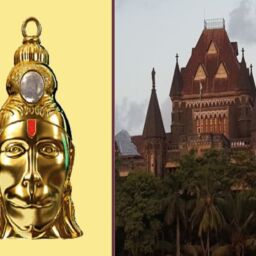An Industrial Design is concerned with the “look of an article,” which is determined by factors such as the article’s lines, colour, or decoration. It could have both three-dimensional and two-dimensional features. An industrial design is a kind of design that encompasses a wide range of products from luxury goods to household furnishings to electrical appliances to automobiles to textiles to graphical user interfaces.[1]
Difference between Industrial Designs and Trademarks
Industrial Designs focuses on the appearance of the article. It does not require that said appearance distinguishes the article of the one enterprise from those of others to be protected, Industrial Design must be new and original.[2] Whereas, a Trademark is a sign or any combination of signs or any combination of signs, words, numerals, visual and figurative features capable of recognizing the products or services of the company. Trademark also indicates the origin of the goods or services there, it must be distinctive.[3]
Difference between Industrial Design and patents
When it comes to industrial design rights (i.e., how things look), the goal of protection is different from that for a patent, principally because an Industrial Design must relate to the appearance of an item, which is not defined by functional or technical need.[4] When it comes to protecting an innovation—a product or procedure that provides a new technological solution to an issue or a new way of doing something in general—patents are the most appropriate. Patent protection, on the other hand, is based on the utility of an item or a method since it must be an innovation.[5]
Why protect Industrial Design?
One of the most important variables in determining client purchasing decisions is product presentation. To settle on the appearance of its product, the company often invests a significant amount of time, money, and resources. As a result, industrial design protection is critical from a business perspective. The following are some of the advantages of Industrial Design protection:[6]
- Investment returns.
- Grants exclusive rights, which aid in preventing or halting unauthorised copying or replication of the protected designs by third parties.
- Can be sold licensed to another enterprise so that revenue can be generated.
- Facilitates marketing and commercialization.
- Encourage creativity in the manufacturing and Industrial Sectors.
Registration of ‘design’ under the Designs Act, 2000
Industrial design protection, as defined by Indian intellectual property law, is a sort of intellectual property right that allows you to produce, use, and sell products that incorporate the protected design to a limited number of persons. These protection rights have a 10-year lifespan in general, but the owner can renew them for an extra five-year period if necessary.
The Essential requirement for registration of ‘design’ under Design Act, 2000[7]
- New or unique designs must not have been used in any other nation prior to the date of application for registration. Shapes and patterns that have been used before in new contexts may be the source of innovation.
- In order for the design to be effective, it must be based on aspects of the item it is intended to decorate or enhance.
- The design should be able to be used in any industrial process to make any product.
- An object’s final appearance is assessed exclusively on its visual appearance. This means that the design must be apparent and prominent in the completed product, which is what it was intended for.
- Design registration would not be possible for any mechanical device or building method that is just mechanical. For example, a key with its uniqueness solely in the form of its corrugation or bending at the area meant to interact with levers within the lock connected with cannot be registered as a design under the Act.
- Trademarks and copyrighted works shall not be included in the design, as stipulated by the Copyright Act, 1957,
Cancellation of registered Design under Design Act, 2000[8]
In order to cancel a design registration, a petition for cancellation in form 8 with the necessary fee must be submitted to the Controller of Designs for the following reasons. –
- That design has been previously registered in India
- That it has been published in India or elsewhere prior to the date of registration or
- The design is not new or original or
- Design is not registrable or
- It is not a design under Clause (d) of Section 2.
Concluding remarks
It is becoming increasingly important to preserve the intellectual property as its scope expands. The need for Industrial Design protection is also growing day by day due to the presence of a high level of competition in the market. It is a very famous quote that “the first impression is the last impression” because the appearance of the product is the very first thing that most consumer looks for, and to make a good-looking product the enterprise invests lots of its time and resources. So, for an enterprise in order to get the fruit of its labour, the protection of Industrial Design plays a very important role. Registration of your design can bring major benefits to your business, such as exclusive rights to your design to others. There are various other benefits too in relation to Industrial Designs as it gives protection to small and medium scale businesses and it not only benefits the owner of an industrial design, but it also benefits from industrial improvements of his product, and it helps to ensure a fair return on investment. Industrial design protection encourages respect and innovation for the benefit of consumers and the general public, resulting in more appealing and diverse products.
Thus, for effective implementation and to secure the inventor of an industrial design is granted an exclusive right against illegal copying or insinuation of his or her design by third parties for a length of time by protecting his or her design. Industrial design must meet two primary criteria: originality and novelty, which allows applicants to utilize the registered Industrial design exclusively. The goal to protect Industrial Design is to raise awareness among all individuals about the importance of registering their designs in order to preserve their brand name and prevent piracy.
Author(s) Name: Vernit Tripathi (Bharati Vidyapeeth University, Pune)
References:
[1] Industrial Design, ‘What is an Industrial Design’ ( WIPO,2019), https://www.wipo.int/designs/en/#, accessed 23th December,2021
[2] General Course on Intellectual Property, ‘Industrial Design Module on the General Course on the Intellectual Property’, ( WIPO, 2019), file:///D:/Intellectual%20Property%20Course/DL101-Module6-Industrial%20Design.pdf, accessed 23rd December
[3] Ibid
[4] Ibid
[5] Ibid
[6] Ibid
[7] Intellect Goodwill, ‘Design Registration Process & Procedures’, https://www.trademarkiso.com/design-registration-process/ , accessed on 23rd December 2021
[8] Designs Act 2000, s 19















